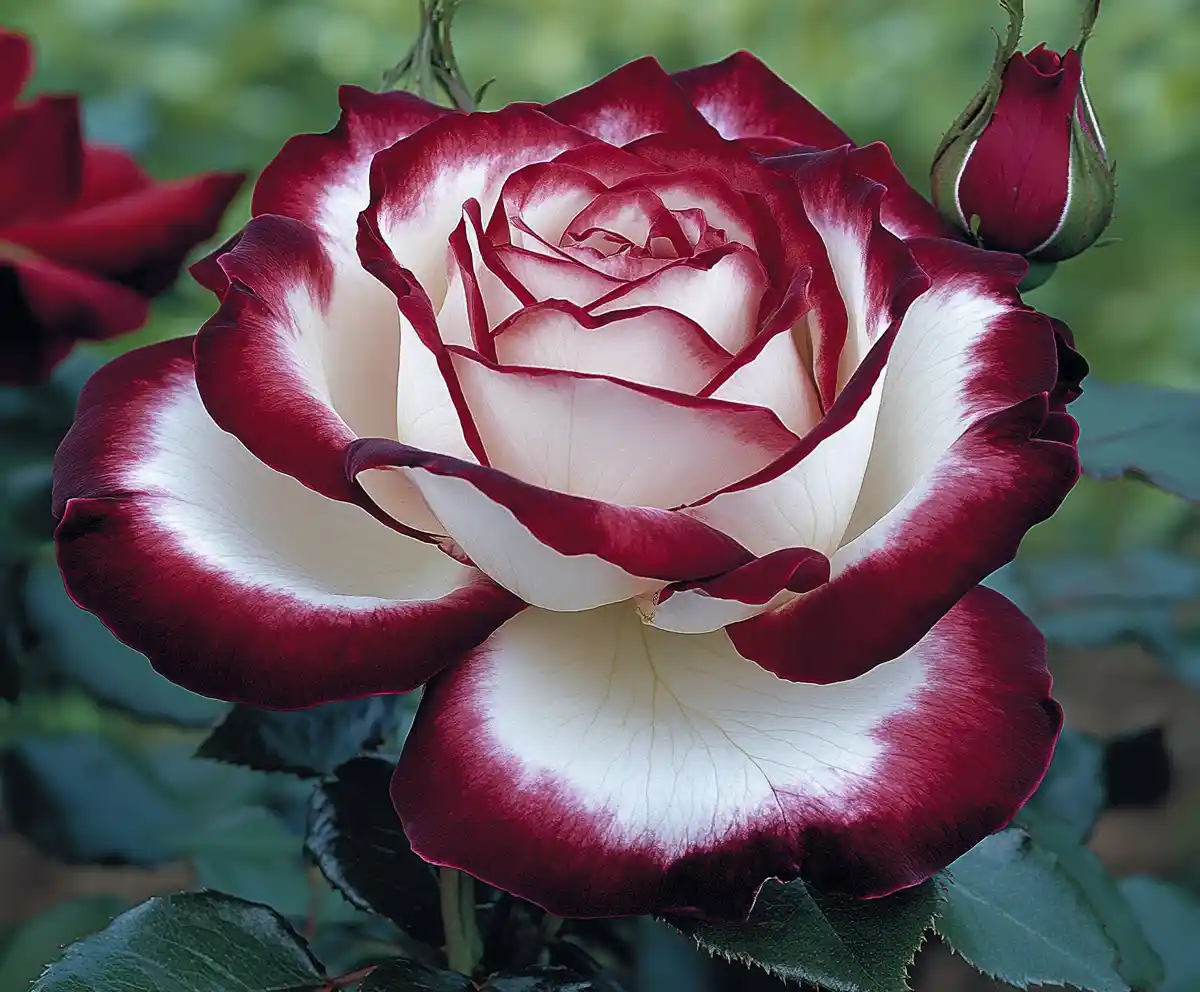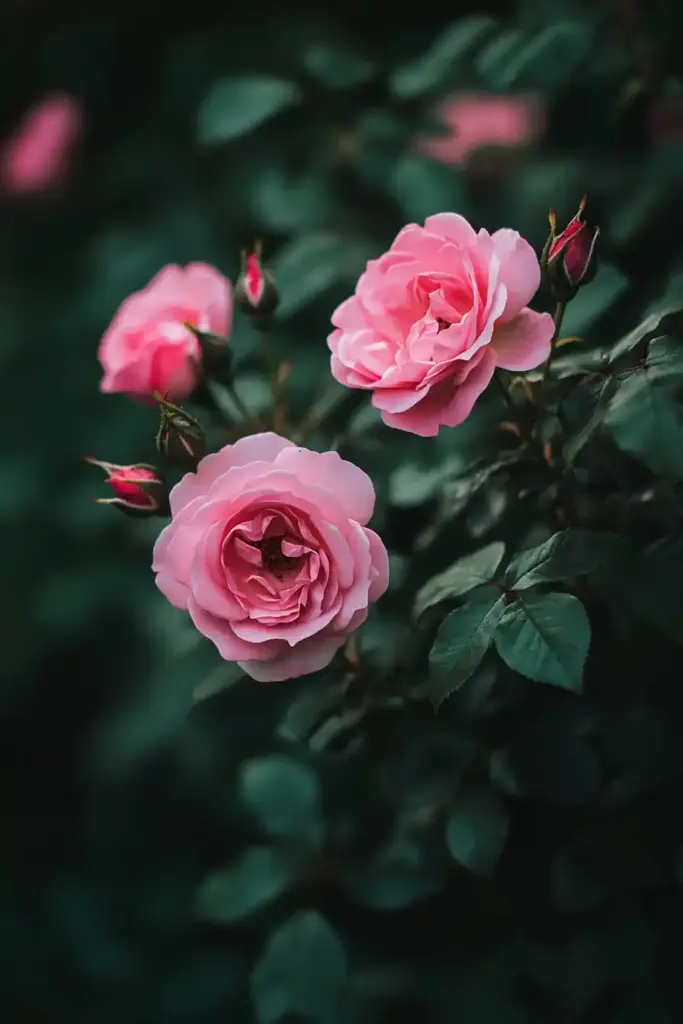A rose garden is more than just a collection of flowers—it’s a timeless symbol of romance, tranquility, and natural elegance. Whether you’re dreaming of lush, fragrant blooms or aiming to create a backyard sanctuary buzzing with bees and beauty, roses can deliver it all.
Contrary to popular belief, you don’t need to be a horticulturist to grow a thriving rose garden. With the right planning and care, even beginners can enjoy the rich colors, sweet scents, and constant blooms that make roses such beloved garden stars. This beginner’s guide will walk you through every step—from choosing the right types of roses to caring for them year-round—so you can confidently create your own perfect rose garden.
🌸 1. Choosing the Right Type of Roses
The foundation of a successful rose garden starts with selecting the right varieties. With so many stunning options, it’s easy to feel overwhelmed—but understanding the main rose types will help you match each one to your garden’s style and your personal preferences.
Here’s a breakdown of popular rose types to help you get started:
Hybrid Tea Roses
- Classic, elegant single blooms on long stems.
- Perfect for cutting and floral arrangements.
- Ideal for formal rose beds or statement plantings.
Floribunda Roses
- Bloom in colorful clusters, offering non-stop visual impact.
- Great for borders, hedges, or mass plantings.
- Often lower-maintenance and disease-resistant.
Grandiflora Roses
- Combine the tall stature of hybrid teas with the bloom power of floribundas.
- Excellent for adding drama and height to your rose garden.
Climbing Roses
- Add vertical charm to fences, arches, pergolas, or trellises.
- Some varieties bloom once, while others flower all season long.
- Ideal for small spaces or cottage-style gardens.
Shrub Roses
- Dense, bushy, and often self-cleaning (no deadheading needed).
- Perfect for informal garden designs and large landscapes.
- Many are very cold-hardy and disease-resistant.
Groundcover Roses
- Low-growing, spreading roses ideal for slopes, edging, or filling bare spots.
- Excellent choice for low-maintenance gardeners.
English Roses (David Austin varieties)
- Old-world beauty meets modern reblooming habits.
- Intensely fragrant with cupped, romantic blooms.
- Work well in both formal and informal garden settings.
👉 Tip: Consider mixing a few different types to create layers of color, fragrance, and structure in your rose garden.
🌍 2. Factors to Consider When Selecting Roses

Choosing roses for your garden isn’t just about picking the prettiest blooms—you’ll want to think about climate, bloom habits, fragrance, and resilience to make sure your rose garden thrives.
Here’s what to keep in mind:
Climate Compatibility
- Cold Climates: If you deal with freezing winters, opt for hardy varieties like Rugosa Roses or Redleaf Roses, which can survive harsh conditions without heavy protection.
- Hot Climates: In warmer regions, heat-tolerant roses like the Knock Out series or Brindabella varieties will flourish even through intense summer sun.
Bloom Cycle
- Once-Blooming Roses: These beauties, like ‘Constance Spry’, put on a jaw-dropping show once a year—perfect for a dramatic seasonal display.
- Repeat-Blooming Roses: Favorites like ‘Iceberg’ and ‘Bonica’ will reward you with waves of color all season long, making your garden lively from spring to fall.
Fragrance Priority
- If fragrance matters (and honestly, it should!), consider ultra-fragrant roses like ‘Mister Lincoln’ or ‘Double Delight’. They’ll fill your garden—and your senses—with unforgettable perfume.
Disease Resistance
- Modern rose breeding has introduced wonderfully tough varieties. Look for disease-resistant options like ‘Flower Carpet’ or ‘Carefree Spirit’ to minimize maintenance and maximize beauty.
👉 Pro Tip: Matching the right rose to your local conditions makes growing a rose garden way easier—and way more rewarding!
🧭 3. Planning the Garden Layout
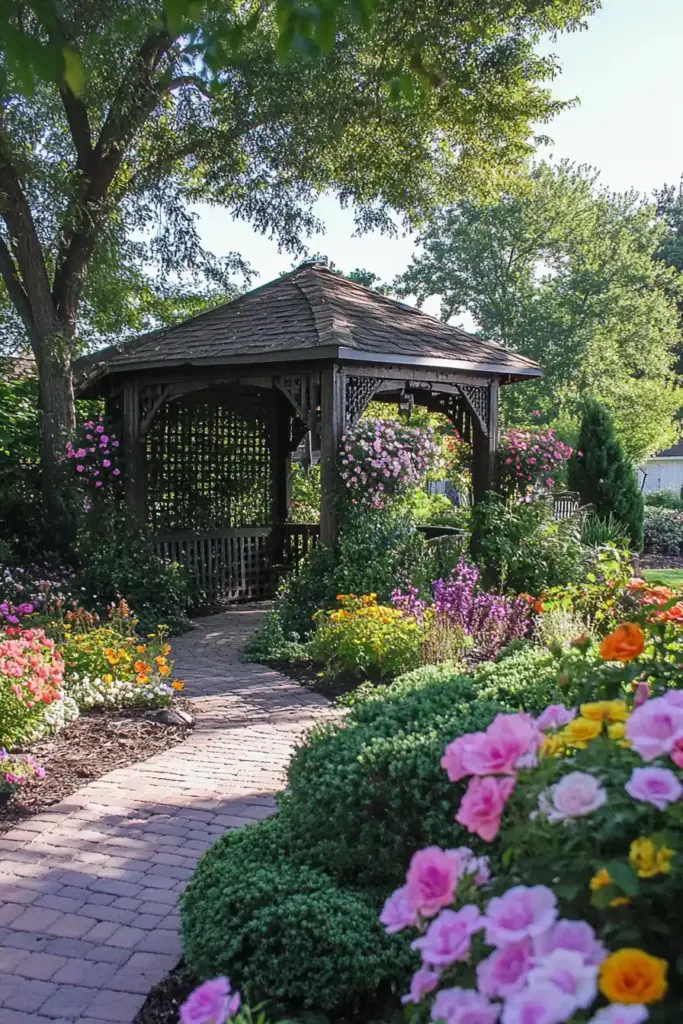
Designing your rose garden layout is like creating a living work of art. Thoughtful planning not only boosts your garden’s beauty but also promotes healthy, vigorous plants.
Here’s what to consider:
Sunlight
- Roses are sun lovers! Aim for 6 to 8 hours of direct sunlight daily.
- Morning sun is especially helpful to dry off dew and reduce disease risks.
Spacing
- Bush Roses: Space them 2–3 feet apart to allow airflow and prevent overcrowding.
- Climbing Roses: Give them 6–10 feet of breathing room to sprawl beautifully over fences, arbors, or trellises.
Proper spacing reduces humidity around plants, helping prevent fungal issues like black spot and powdery mildew.
Garden Styles
- Formal Rose Beds: Structured layouts with roses arranged symmetrically for a classic, elegant vibe.
- Cottage Gardens: Mix roses with free-flowing perennials and ornamental grasses for a relaxed, romantic atmosphere.
- Vertical Gardens: Use climbing roses to add height and drama, making the most of small spaces.
Companion Planting
- Great companions: Lavender, catmint, geraniums, and alliums.
- These plants not only look gorgeous but also repel common rose pests naturally!
👉 Design Tip: For extra flair, combine roses with clematis—your garden will be layered with texture and color from ground level to overhead!
🌱 4. Soil Preparation
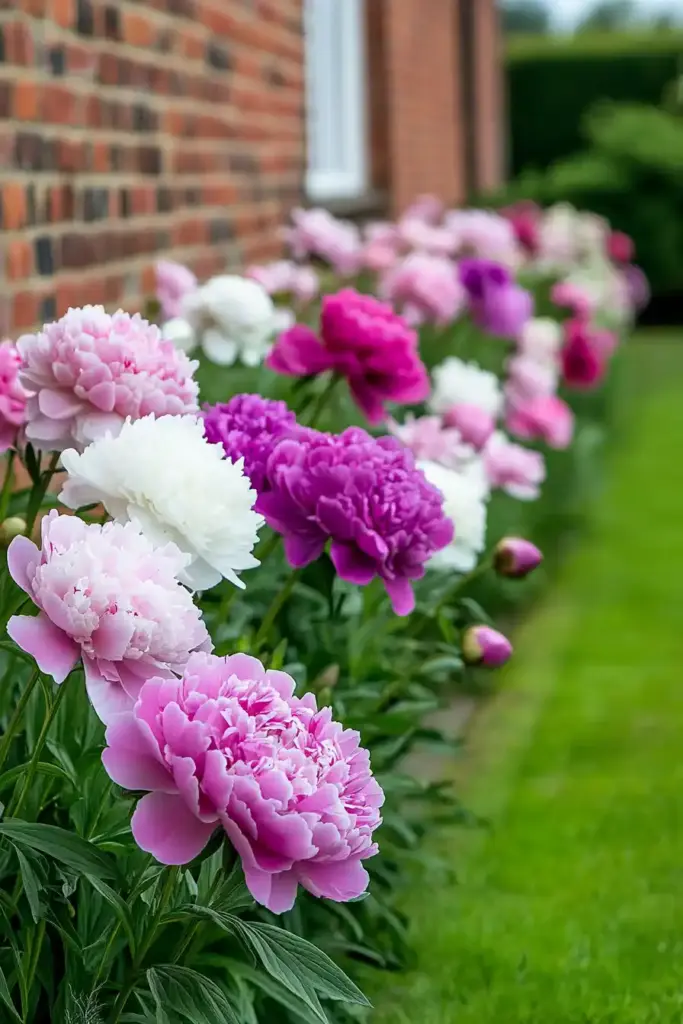
If roses are the stars of your garden, then healthy soil is the stage they need to shine. Good soil preparation gives your rose garden the strong foundation it deserves.
Ideal Soil Conditions
- Roses prefer slightly acidic to neutral soil, with a pH between 5.5 and 7.0.
- Well-drained soil is critical—roses don’t like wet feet!
👉 Tip: Test your soil before planting. Simple at-home kits are inexpensive and super helpful.
Soil Amendments
Depending on your native soil, you might need to make some adjustments:
- Sandy Soil: Add compost, aged manure, or peat moss to help it retain nutrients and moisture.
- Clay Soil: Improve drainage by mixing in perlite, coarse sand, and gypsum, plus lots of organic matter to lighten it up.
Healthy, loose soil encourages deep root growth, leading to stronger, more resilient rose bushes.
Mulching Magic
After planting (and even before), apply a 2–3 inch layer of organic mulch around your roses:
- Helps retain moisture
- Suppresses weeds
- Regulates soil temperature year-round
Use shredded bark, straw, wood chips, or even pine needles—but keep mulch a few inches away from the rose stems to prevent rot.
🌼 5. Planting Roses
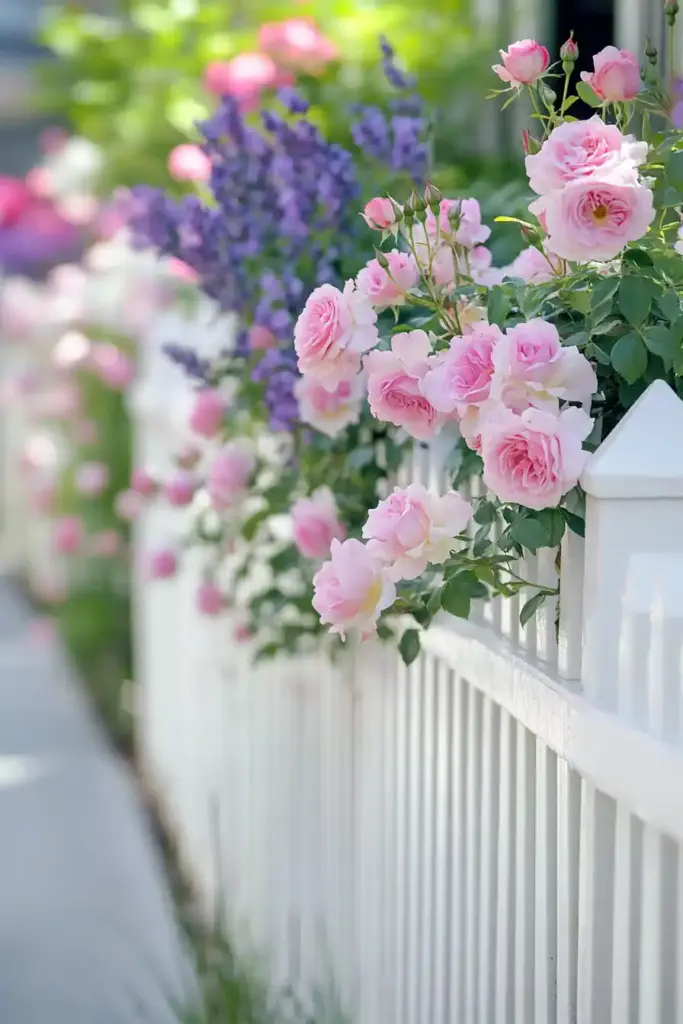
Planting your roses properly sets the stage for healthy growth and spectacular blooms. A little extra care now pays off with seasons of beauty!
Best Planting Time
- The ideal time to plant a rose garden is during the dormant season — typically late winter to early spring.
- In milder climates, fall planting is also an option.
Step-by-Step Planting Guide
- Pick the Right Spot
Choose a sunny, well-drained location with plenty of air circulation. - Dig the Hole
Make the hole twice as wide and just as deep as the root ball. Loosen the soil at the bottom to encourage root growth. - Prepare the Rose
- Bare-root roses: Soak the roots in water for 2–3 hours before planting.
- Potted roses: Gently loosen roots if they’re circling inside the pot.
- Position the Rose
- In cold climates, bury the graft union (the swollen area near the base) about 1–2 inches below the soil surface.
- In warm climates, keep the graft union just above ground level.
- Backfill and Water
Fill the hole halfway, water thoroughly, then finish filling. Press soil gently (but don’t pack it too tight) and water deeply again.
👉 Pro Tip: Add a slow-release organic fertilizer into the planting hole to give your roses a head start!
💧 6. Watering and Fertilizing Roses

Keeping your roses hydrated and well-fed is the secret to a lush, vibrant rose garden bursting with blooms.
Watering Tips
- Water deeply at the base of the plant to soak the root zone — aim for about 10–12 inches deep.
- In hot weather, water once or twice a week, depending on rainfall and soil conditions.
- Morning watering is best—it allows foliage to dry during the day, helping prevent diseases like black spot and mildew.
👉 Avoid overhead watering to keep leaves dry and disease-free.
Fertilizing Schedule
- Start feeding your roses in early spring when new growth appears.
- Continue fertilizing every 4–6 weeks until late summer.
- Stop fertilizing in early fall to allow your roses to harden off before winter.
Best Fertilizers for Roses
- Organic Options: Compost, well-rotted manure, bone meal, or fish emulsion provide slow, steady nutrition.
- Synthetic Options: Choose a balanced rose fertilizer (like 10-10-10 or 12-12-12) for lush foliage and prolific blooms.
👉 Tip: Water your roses before and after applying fertilizer to prevent root burn.
✂️ 7. Pruning and Deadheading Roses
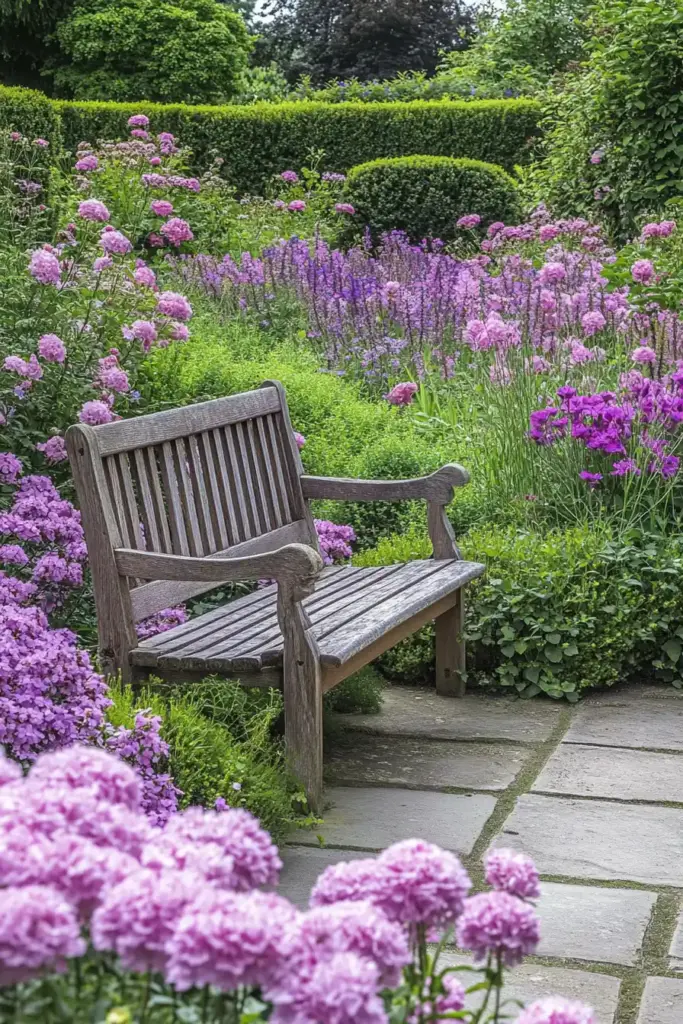
Pruning and deadheading are essential to keep your rose garden looking fresh, healthy, and bursting with blooms all season long.
Pruning Basics
- When to Prune: Early spring, just as new buds start to swell but before full leaf-out.
- Tools: Use sharp, clean pruning shears to make clean cuts and avoid damaging the plant.
How to Prune
- Remove any dead, damaged, or diseased stems first.
- Cut back crossing branches to improve air circulation.
- Shape the plant by trimming to outward-facing buds, encouraging a more open, vase-like structure.
- Make cuts at a 45-degree angle about ¼ inch above a healthy outward-facing bud.
👉 Tip: Shrub roses need lighter pruning for shape, while hybrid teas benefit from a harder prune to encourage bigger blooms.
Deadheading Tips
- Deadheading is simply removing spent flowers to encourage more blooms.
- Snip just above the first five-leaflet set on the stem.
- Stop deadheading in late summer to allow rose hips (the fruit) to form, helping the plant naturally prepare for winter dormancy.
Keeping up with pruning and deadheading ensures that your rose garden stays colorful, neat, and healthy all year long!
🐛 8. Managing Pests & Diseases
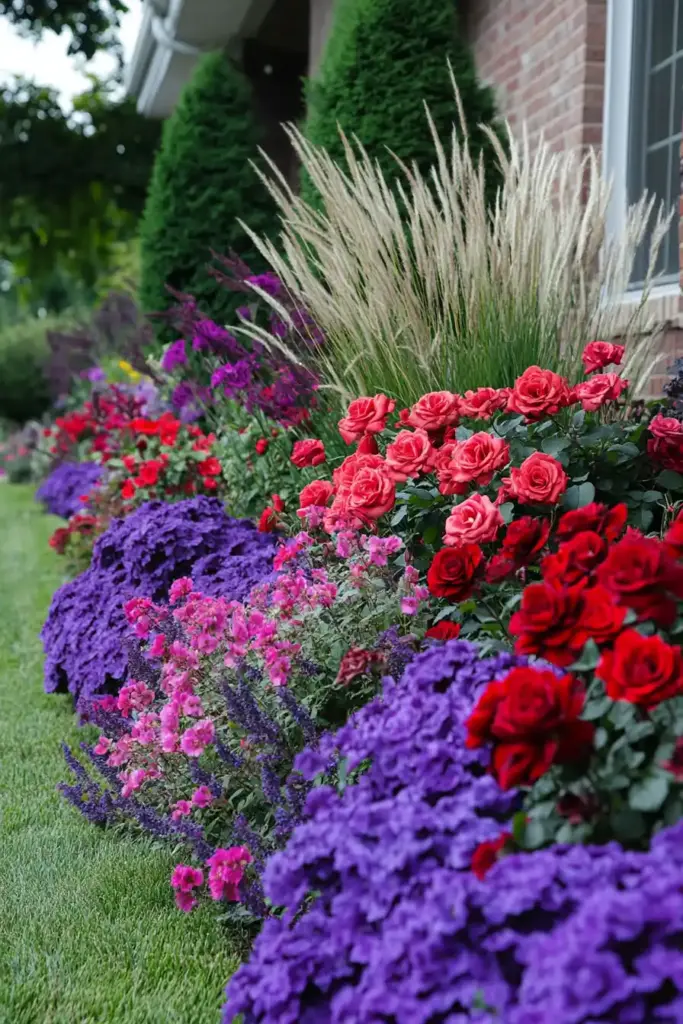
Even the most beautiful rose garden can face challenges from pesky insects and plant diseases. Staying vigilant and using gentle control methods keeps your roses healthy and thriving.
Common Rose Pests
- Aphids: Tiny green or black bugs that cluster on new growth. They suck sap and distort leaves.
- Solution: Blast them off with water, introduce ladybugs, or use insecticidal soap.
- Spider Mites: Microscopic pests causing stippled, yellowing leaves, especially in hot, dry weather.
- Solution: Increase humidity, spray with neem oil or miticides if needed.
- Japanese Beetles: Metallic beetles that skeletonize rose leaves.
- Solution: Handpick and drop into soapy water or use beetle traps placed away from your roses.
Common Rose Diseases
- Black Spot: Dark, round spots on leaves that lead to premature leaf drop.
- Powdery Mildew: White, powdery coating on leaves and buds.
- Rust: Orange or yellow powdery spots on the underside of leaves.
Preventative Measures
- Good Airflow: Space roses properly and prune regularly to increase circulation.
- Water at the Base: Keep leaves dry to reduce fungal issues.
- Clean Garden Practices: Remove fallen leaves and debris to stop overwintering pests and disease spores.
- Fungicides: Use organic options like sulfur or copper sprays when needed, especially during wet seasons.
👉 Pro Tip: Early detection is key! A quick daily glance at your roses can catch problems before they spread.
📅 9. Seasonal Rose Care
Roses have different needs throughout the year, and adjusting your care with the seasons will keep your rose garden flourishing beautifully.
Spring Care
- Prune: Shape the plants and remove dead or weak canes.
- Fertilize: Start regular feeding as new growth appears.
- Pest Watch: Begin monitoring for aphids, mites, and fungal diseases.
Summer Care
- Deep Water: Roses need consistent moisture, especially during heat waves.
- Deadhead Regularly: Encourages repeat blooming and keeps plants tidy.
- Fertilize: Continue feeding every 4–6 weeks to fuel ongoing flowering.
Fall Care
- Ease Up: Stop deadheading in late summer to allow rose hips to form, helping the plant transition into dormancy.
- Light Pruning: Trim back any long canes to prevent winter wind damage.
- Stop Fertilizing: Cease feeding in early fall to prevent tender new growth that could be damaged by frost.
Winter Care
- Mulch Heavily: Add extra mulch around the base to protect roots from freezing temperatures.
- Cover in Cold Climates: In frigid regions, mound soil over the crown and consider covering plants with burlap or rose cones.
👉 Quick Tip: Healthy fall preparation leads to stronger spring blooms!
❓ Frequently Asked Questions
When is the best time to plant a rose garden?
The best time to plant roses is during their dormant season — typically late winter to early spring. This gives the roots time to establish before the growing season begins. In warmer climates, fall planting is also a good option.
Are rose gardens hard to maintain?
Not at all—with the right planning!
Choosing disease-resistant varieties, proper spacing, and consistent watering and feeding makes rose care straightforward. A little regular pruning and pest management go a long way.
Where do garden roses grow best?
Roses thrive in spots that offer 6–8 hours of direct sunlight daily and well-drained, loamy soil rich in organic matter. Good air circulation is also key to prevent fungal diseases.
What should you avoid planting near roses?
Avoid aggressive plants that compete for nutrients and space, such as large shrubs, invasive groundcovers, or heavy feeders like tomatoes and potatoes, which can also spread diseases harmful to roses.
What is the rarest rose color?
True blue roses are the rarest—because they don’t occur naturally! Breeders have created lavender and mauve roses that offer a bluish hue, but pure blue roses remain a botanical dream.
🌟 Conclusion
Creating a beautiful rose garden might seem daunting at first, but with the right planning, selection, and care, it becomes a truly rewarding experience. By choosing varieties suited to your climate, preparing healthy soil, and following consistent seasonal care, you’ll enjoy vibrant, fragrant blooms year after year.
Remember: patience and a little daily attention go a long way. Whether you dream of formal rose beds, colorful cottage gardens, or climbing roses spilling over an arbor, your perfect rose garden is well within reach.
Now it’s time to roll up your sleeves—and start planting beauty that will last a lifetime!

